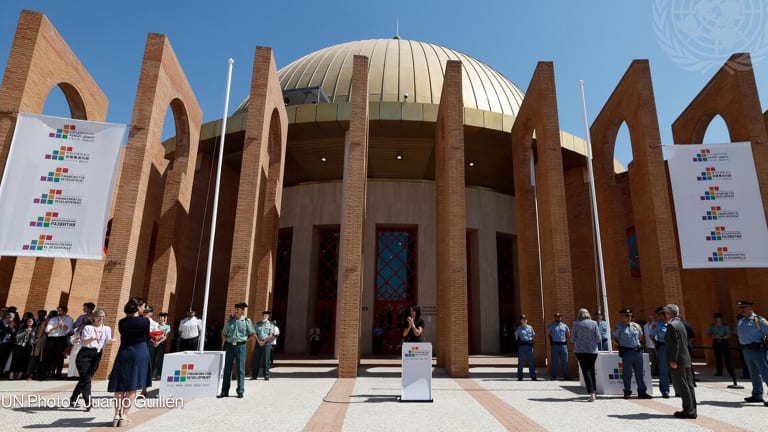
A few weeks ago, the Fourth High Level Forum on Aid Effectiveness was held in the South Korean city of Busan. The most important question before us was: What is the future role of development cooperation in resolving global issues?
One thing we can say for sure is that the aid architecture as we now know it – rich Western countries helping poor countries in Africa and Asia – is rapidly losing its relevance.
Why is that? To begin with, when it comes to today’s most pressing issues, national governments are only one part of the equation. National governments cannot address matters like climate change, migration or the financial system on their own. Other players are needed, and these players are increasingly non-state actors, such as nonprofits, philanthropists and companies.
Complicating the picture is the fact that some countries we continue to designate as “developing” – such as China, India and Brazil – are themselves becoming more and more active in “real” developing countries. They have no qualms about pursuing a policy of self-interest and playing by their own rules. Deborah Brautigam wrote about this phenomenon in her fascinating book “The Dragon’s Gift.”
The Chinese approach in Africa, for example, builds on a system the Chinese learned from the Japanese: generous loans at competitive rates, linked to the supply of Chinese machinery, tools and construction services, to be paid back in raw materials. Whatever we may think of these practices, they are the new reality. And the emerging economies are not the only new players in developing countries: investment funds, investment firms and generous benefactors are playing an ever expanding role.
A third reason behind the disappearance of the old aid architecture is the change in global poverty patterns. To begin with, the number of poor countries is on the decline. The International Development Association, the division of the World Bank concerned with lending money to poor countries, is expected to lose more than half of its clients in the next 10 to 15 years. At present, 68 countries are categorized as “poor”; by around 2025 that number will have fallen to around 36. Most of them will be those tragic places we call “failing states”: Afghanistan, Yemen, Congo and the like.
The idea of spending a proportion of gross domestic product on development aid originated in a world that came in only two flavors: poor countries and rich countries. The aim of development aid was an international and more equitable redistribution of wealth. But the spectacular drop in the number of poor countries shows that the dominant practice of dividing the world into poor countries and rich countries is no longer accurate.
It is not only the number of poor countries that has fallen; the number of poor people is also decreasing. According to the respected Brookings Institution, the number of poor people fell from more than 1.3 billion to around 900 million between 2005 and 2010. This is a much more rapid decline than would have been thought possible even just a few years ago. The Brookings Institution also estimates that by 2015, there will be fewer than 600 million poor people, although the current economic crisis may, of course, throw a spanner in the works.
Great strides are clearly being made. Not only in Asia, but also in Africa. According to the figures of the International Monetary Fund and The Economist magazine, between 2001 and 2010, the 10 countries with the most rapidly growing economies included no fewer than six African nations. The African Development Bank has predicted that 10 African countries will have growth rates exceeding 7 percent this year. What is more, private equity funds are increasingly turning their attention to Africa. The notion of Europe as a continent of prosperity and Africa as a continent of misery has less and less to do with reality.
Of course, there are still too many poor people, but they are no longer concentrated in poor countries. Indeed, the poor are increasingly likely to be found in middle-income countries. First and foremost, it is the elites of these countries that bear the responsibility for redistribution. By “redistribution,” I mean the principle that all people should be given the chance to share in economic progress.
These trends do not mean that development cooperation has become superfluous. But the smaller role played by the state, the rise of new players and the change in poverty patterns do demand a new architecture of international responsibility. Development cooperation is evolving into a kind of broker function for international responsibility.
Seen from this perspective, the traditional aid architecture has had its day. We can take one of two paths. Either we can talk only of traditional development cooperation, or we can open the doors to new ways of thinking.
The first steps were taken in South Korea. Let’s pick up where we left off there and truly go beyond the old Western style of development cooperation.




